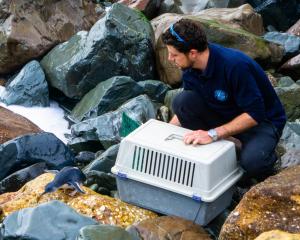
The Waitaki district fared better during the economic recession than New Zealand as a whole, according to an economic profile for 2010 compiled for the Waitaki Development Board.
The board commissions Business and Economic Research Ltd (Berl) to prepare an annual report on the district's performance, along with a 10-year comparison.
That report has just been released and shows that in most key sectors, the Waitaki district performed better than the average for New Zealand.
However, where it did not do so well was in population growth, which has remained static.
But in terms of growth in gross domestic product (GDP), employment, labour productivity and business size, it has done better than the national average.
Last year, 8913 full-time equivalent jobs in almost 3000 businesses were producing $902 million in the Waitaki district.
Employment growth was slow, having an increase of only 27 full-time equivalent jobs, or growth of 0.3%, compared with a decline in jobs of 1.7% nationwide.
That small growth in jobs was recorded despite a 10.7% drop in construction-industry jobs in the district. That was caused by a fall in building, roading and bridge construction.
In contrast, the primary (agricultural), mining (mainly because of Oceana Gold at Macraes), wholesaling, health and community sectors all experienced job growth.
The three main contributors to growth in the district's economic output were manufacturing (up 26.4%), primary (up 23.8%), and business services (up 21.6%).
Almost half the district's economic output comes from the primary and manufacturing sectors.
The primary sector provided almost a quarter of the district's employment and economic output in 2010, while manufacturing - mostly meat processing - contributed a fifth of jobs and a quarter of economic output.
The report said the district enjoyed positive growth in employment and economic output during last year, even as the national economy slowed.
"Comparing these to national trends, the district appears to have shown better performance in terms of the key performance indicators. The average business size also grew, despite a low population-growth rate.
Over the long term, Waitaki had suffered from stagnant population growth, as had several other predominantly rural areas throughout New Zealand.
The growth in the primary sector has been put down to significant growth in dairying and gold mining.
The report highlights changes in Waitaki's agriculture, the increase in dairy farming in the district continuing to outstrip national growth in the industry.
As dairy production rose, sheep farming contracted substantially across the district.
In 2000, about three-quarters of employment in farming was in sheep farming. Since then, total employment had grown, but all of the gains had been in dairying.
Dairy farming accounted for 60% of employment in farming in the district in 2009.
Tourism had also flourished in recent years in the district, creating jobs, attracting investment, enhancing local pride and leading to improved public facilities.
"Tourism is really a key sector in the Waitaki district, having positive growth both on an annual basis and for the last 10 years," the report said.
Tourism was ranked fifth in terms of employment.
2010 economic profile
Did you know. -
• Population in 2010 was 20,324.
• District has 66,900 cows.
• District has 747,000 sheep.
• Top employers are primary industry (2055 jobs), manufacturing (2035) and retail-distribution (1982).
• Top earners are manufacturing ($238 million), primary ($214 million) and business services ($194 million).
• $902 million in GDP is produced in the district.
• District has 8913 full-time equivalent jobs.
• District has 2843 business units.












